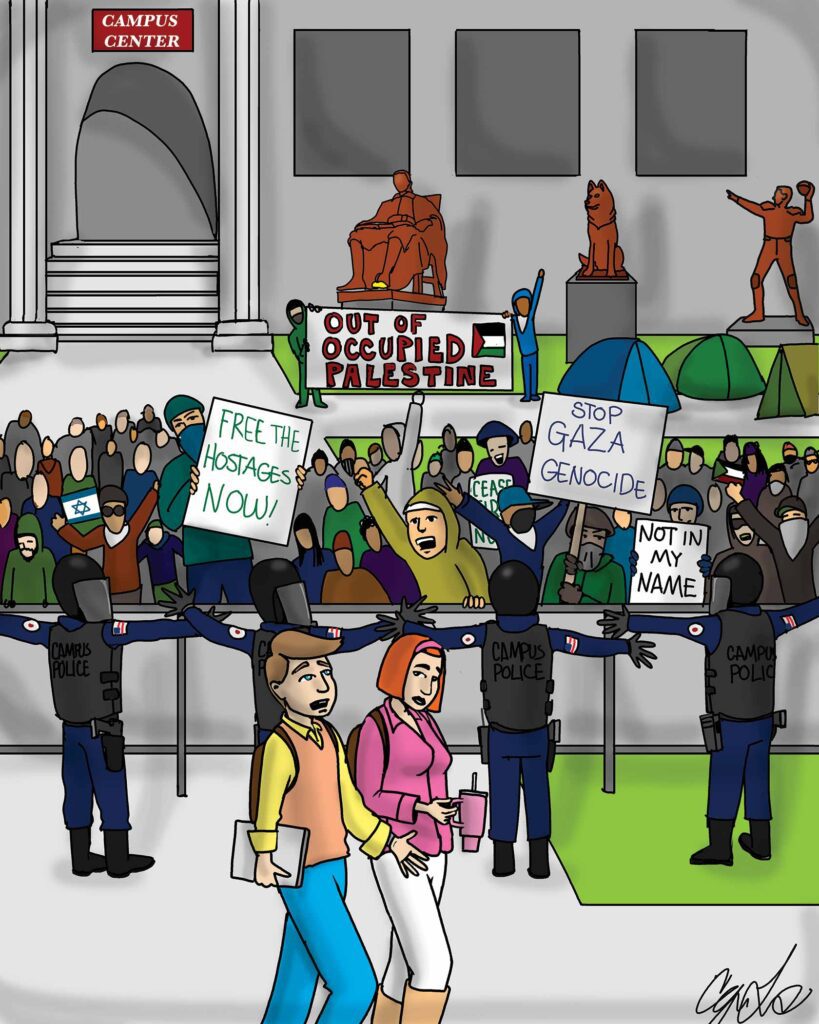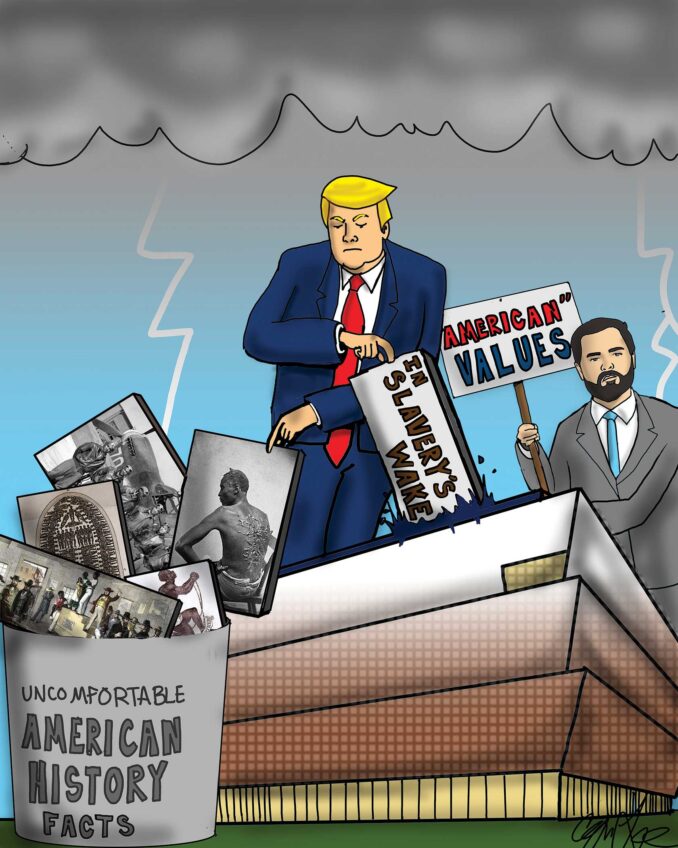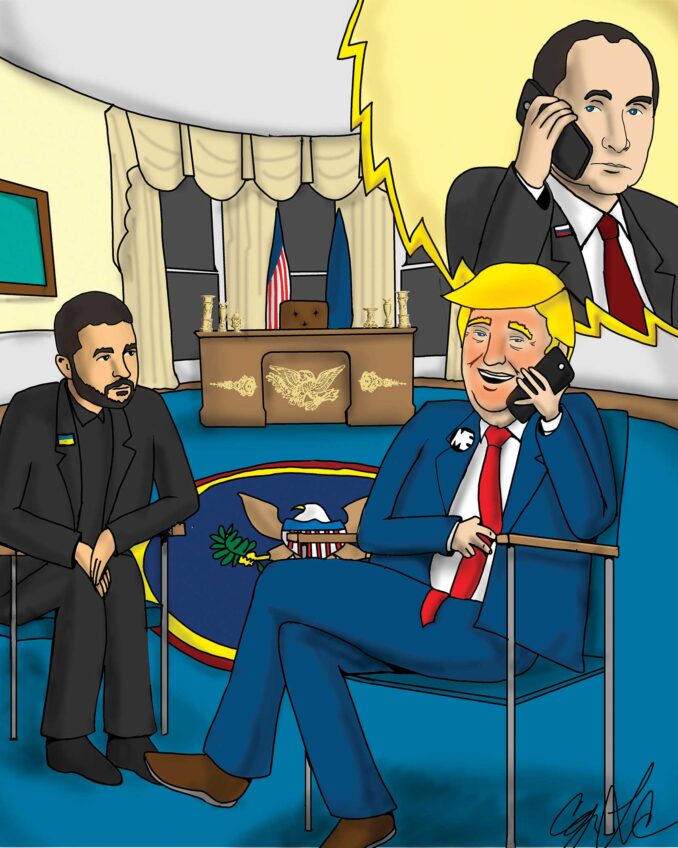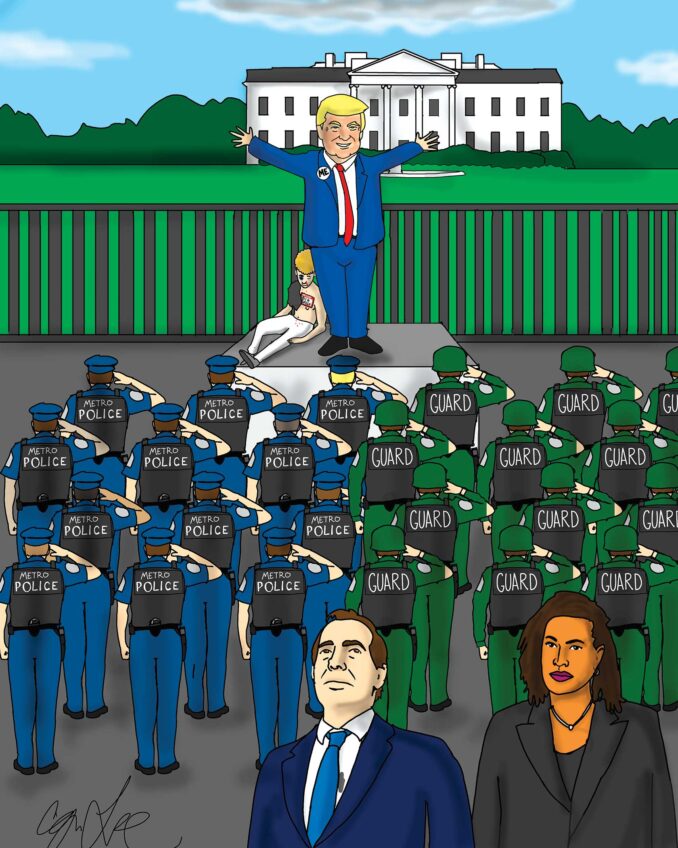
Student protests over deadly Israeli military strikes in Gaza have roiled college campuses across America, resulting in fierce debates over free speech, the right to assemble and the responsibility of college administrators to ensure the safety of all its students, faculty, staff and the surrounding community.
Only the heartless could watch news footage of Gazans pulling innocent women and children out of the rubble where apartment blocks once stood and not wonder if Israel’s campaign against Hamas has gone too far. And only the heartless could follow the tragic saga of Israeli hostages seized by Hamas after their lethal Oct. 7 incursion left over 1,100 dead and not sympathize with Israel’s determination to eliminate Hamas as a political and military force.
Students, long the conscience of American politics, have responded by stepping into the emotional fray. Marches, demonstrations and encampments in support of a ceasefire in the conflict and an end to the count of civilian casualties, now numbering over 20,000, have dominated life on many campuses. Denunciations of U.S. military support of Israel, along with criticism of Israeli policies toward expanding settlements, restricting the movement of Palestinians and paying lip service to a two-state solution have also been features of protests.
The students have raised legitimate questions and deserve to be heard. Counter-protesters, raising their voices in support of Israel’s right to defend itself and against expressions of antisemitism, have an equally legitimate right to air their grievances.
But no one on either side of the barricades has the right to resort to violence or speech designed to incite violence. Both sides have the right – and, some might say, even the duty – to make observers and those in power uncomfortable. A vacuum of inaction and diffidence in the face of injustice is what motivates protests in the first place.
The British colonial powers rightly feared that protests against their rule would inflame the governed. Rather than address their complaints, they imposed restrictions on free assembly. We know how that turned out. It is no accident that the First Amendment to the Constitution enshrined a number of rights central to the power of protest: “Congress shall make no law … abridging the freedom of speech, or of the press; or the right of the people peaceably to assemble, and to petition the Government for a redress of grievances.”
The Civil Rights Movement gathered strength, momentum and moral courage from the willingness of students to join peaceful marches, sit-ins, freedom rides and protests against the police batons, firehoses and dogs of the segregated Old South.
The Vietnam War, an undeclared conflict pursued under the cover of secrecy and deceit, brought out millions of student protesters who never bought the domino theory. Like Black protesters in Alabama and Georgia, they were met by state-sponsored violence but persisted until policymakers in Congress, the White House and the Pentagon warily moved towards an uneasy peace.
Students in Boston were led by the Rev. Martin Luther King Jr. in protesting school segregation, and participated in school boycotts to highlight the reality of two systems of public education, separate and unequal, in the Athens of America.
The anti-apartheid movement to bring down white rule in South Africa was aided by divestment campaigns on campuses across our country and sit-ins in front of the South African embassy in Washington.
However, tolerance for campus disruptions caused by idealistic student demonstrators is in short supply these days – diminished by intimidation from right-wing critics who shout down college presidents called in to testify before Congressional kangaroo courts. Holding onto their jobs seems to have a greater priority than respecting mild instances of civil disobedience in the forms of tent encampments.
Boston Mayor Michelle Wu made a tough call to remove Emerson College protesters from a public way off Boylston Street, citing potential threats to public safety by demonstrators blocking access to fire doors in the tight space.
Less understandable was the decision to remove protesters from the lawns at schools like Northeastern, where encampments did not pose a threat to public safety.
Administrators, on the other hand, do have an obligation to step in where protesters cross the line from expressing political opinions to voicing threats. And student protest leaders have an equally important obligation to rein in their own ranks to keep civil demonstrations from spiraling into hate speech.
The presence of discomfiting opinions, shared at volume, is not in and of itself speech that needs to be suppressed. But Jewish students who have been spit upon, threatened, jostled and subjected to hateful references like calls for a “Final Solution” must be protected. Removing the individuals responsible for such behavior is the first step in addressing such attacks. If similar attacks or hate speech persist, in spite of efforts to communicate clear guidelines from student leaders and administrators, then it becomes reasonable to declare a breakdown of civil order and end the encampments.
There are obviously gray areas that invite further discussion. Is the phrase “river to the sea” a political slogan, or hate speech meant to incite violence? Both sides of the Israeli-Palestinian divide have used variations of the phrase to express either political dominance of the land between the River Jordan and the Mediterranean or complete removal, by any means necessary, of the other side from the disputed territory.
In our era of social media dominance, it seems some young people have few filters through which to separate reasonable political speech, even if extreme, from hateful expressions. How else to interpret the actions of Khymani James, a former student representative on the Boston School Committee, who was suspended by Columbia University for saying back in January, “Zionists don’t deserve to live.” James, facing recent disciplinary charges for his comment, went on to become a student leader of Gazan protests at Columbia and has since posted the statement: “What I said was wrong.”
Like any crisis, the current turmoil on college campuses offers opportunity amid the chaos: to come to a more honest global reckoning of the costs of the long-festering and mostly ignored Israeli-Palestinian stalemate; to better define the limits of free speech in a hyper-charged social media world; and to come to grips with a society that on the one hand laments the inaction and passivity of youth and then clutches its pearls once they rouse themselves to a cause.
Arbitrarily removing tents from campus lawns is not the answer. Like grass once mowed, they’ll grow back. They’re just the symptom of global policies that have failed Israelis and Palestinians alike.







